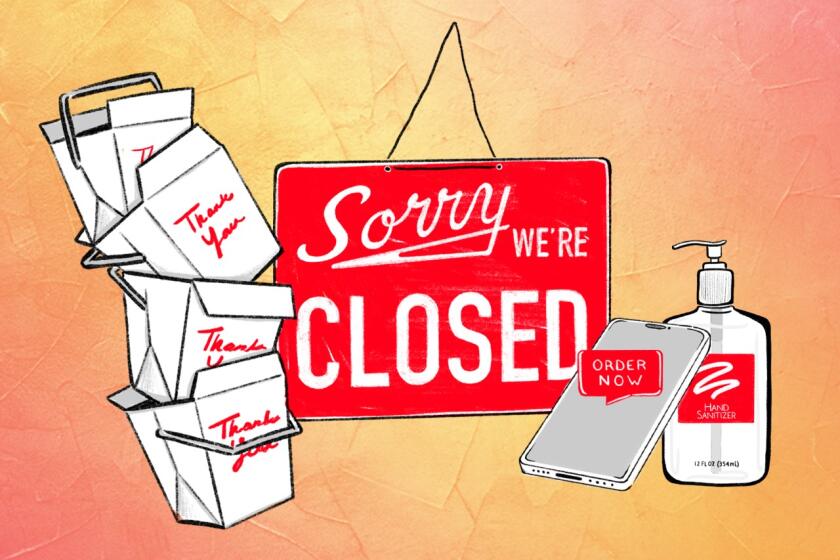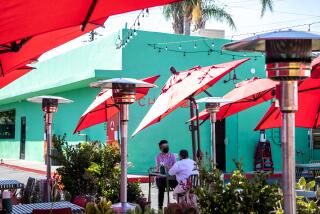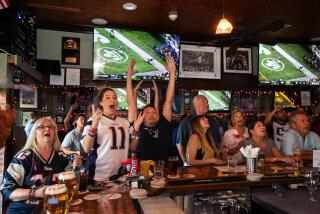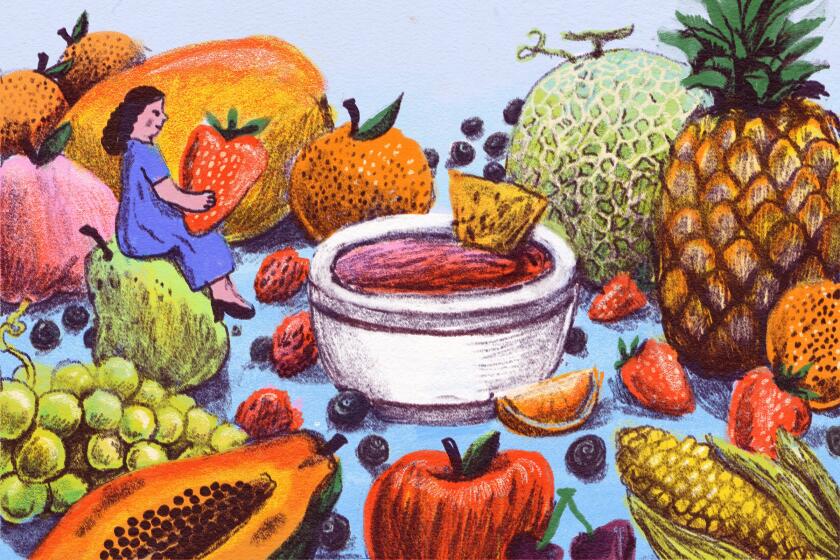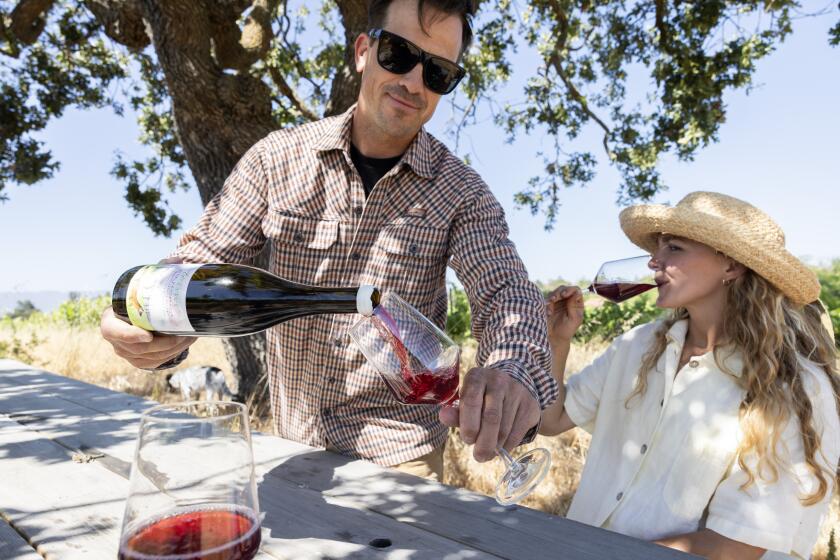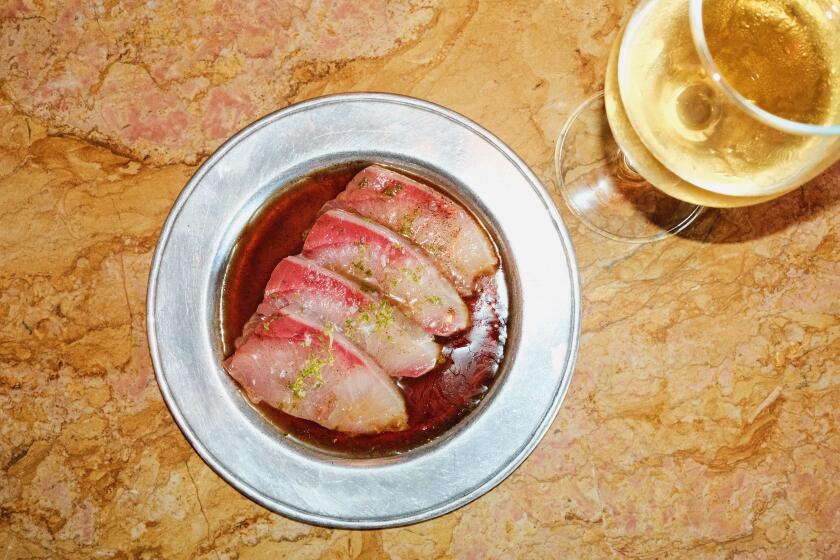Bar owners weigh reopening as Los Angeles moves to orange tier
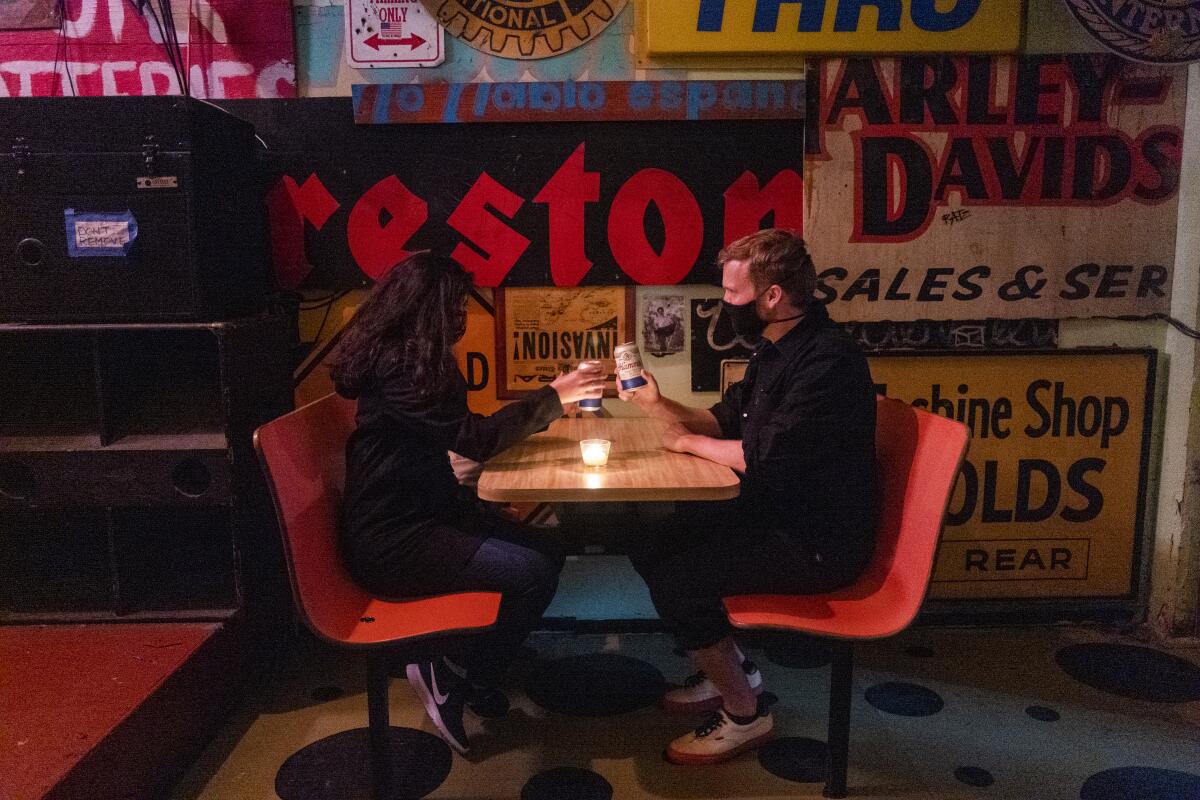
On Monday when Los Angeles County moves into the next tier of reopening guidance, bars without food service can begin pouring drinks again — some for the first time in more than a year.
“There’s no two ways about it: It’s really tough,” said Brett Winfield, operations director for hospitality group Pouring with Heart. “I would say that beyond Prohibition, there’s been nothing more challenging for bars — specific, without food — ever happen.”
Winfield and his colleagues operate nearly 20 bars in Los Angeles, including the Varnish, Bar Clacson, Las Perlas and the Normandie Club, and nearly all have been closed since June. Now that L.A. bars without food can start to reopen, he says the beverage group can finally plan its return.
This week state officials cleared Los Angeles and Orange counties to proceed to California’s orange phase of reopening. The move expands indoor dining capacities at restaurants from 25% to 50% and allows breweries, wineries and distilleries to seat customers indoors at 25% capacity, provided tables are spaced eight feet apart.
Bars without food service — or those that did not partner with a food operator during the pandemic — have remained closed under the state’s color-coded regulations. On Monday, bars without food service can join in the reopening: outdoors only and at 25%, with curfews set at 10 p.m.
For Pouring with Heart, the change means the group can begin to rehire its staff of almost 500 employees, at least three-quarters of them in L.A., and plan a staggered return of its bars.
L.A. County will relax more pandemic restrictions when it moves into the orange tier, the second-most-lenient of the state’s four-phase reopening plan.
A number of Pouring with Heart’s bars serve food, including Cole’s and Imperial Western Brewing Co; Bar Clacson shares its space with sandwich shop E Stretto. Those bars could have opened under California’s red tier. But Winfield said the group decided to cease nearly all operations to survive.
“We went into a kind of hibernation mode and tried to make sure that once this thing was over that we could reopen all the venues, and that’s exactly what we’re going to do when we get into this next tier,” Winfield said. “We’re going to start the wheels turning, and every one of our venues is coming back.”
Another L.A. beverage juggernaut, Houston Hospitality group, also is planning its return.
With the orange tier looming, nightlife and bar impresarios Mark and Jonnie Houston recently reopened the patio of their retro-inspired Hollywood bar, Good Times at Davey Wayne’s, with the sale of tacos. This will be the first of their properties to fully return, most likely followed by nearby cocktail bar No Vacancy.
Many of the Houstons’ bars revolve around performance and experience — magic tricks, burlesque shows and carnival-inspired games — and the team is navigating reopening amid the strict state and county guidelines around entertainment under the orange tier.
Downtown’s La Cita also operates at the intersection of alcohol and entertainment. The longtime bastion of Latino culture is known for live music and DJ sets of cumbia, perreo, reggae, punk and more. While the music and entertainment will remain paused, co-owner and managing partner Carl Lofgren says the bar will return in the next week or two under the new tier for the first time since March 15, 2020. Lofgren said his team has removed some of the seating on the bar’s back patio to offer a more open floor plan.
Lofgren also co-owns El Dorado downtown and Gold-Diggers in Hollywood, and is part of an extended bar family that operates a number of still-closed operations, including Footsies in Cypress Park, the Short Stop in Echo Park, Club Tee Gee in Atwater Village and Melody Lounge in Chinatown. He’s hoping a number of these venues will be allowed to reopen in adjacent parking lots, with proper permitting.
As La Cita nears reopening, Lofgren said the bar likely won’t find its rhythm — with music and dancing — until the third or fourth quarter of 2021.
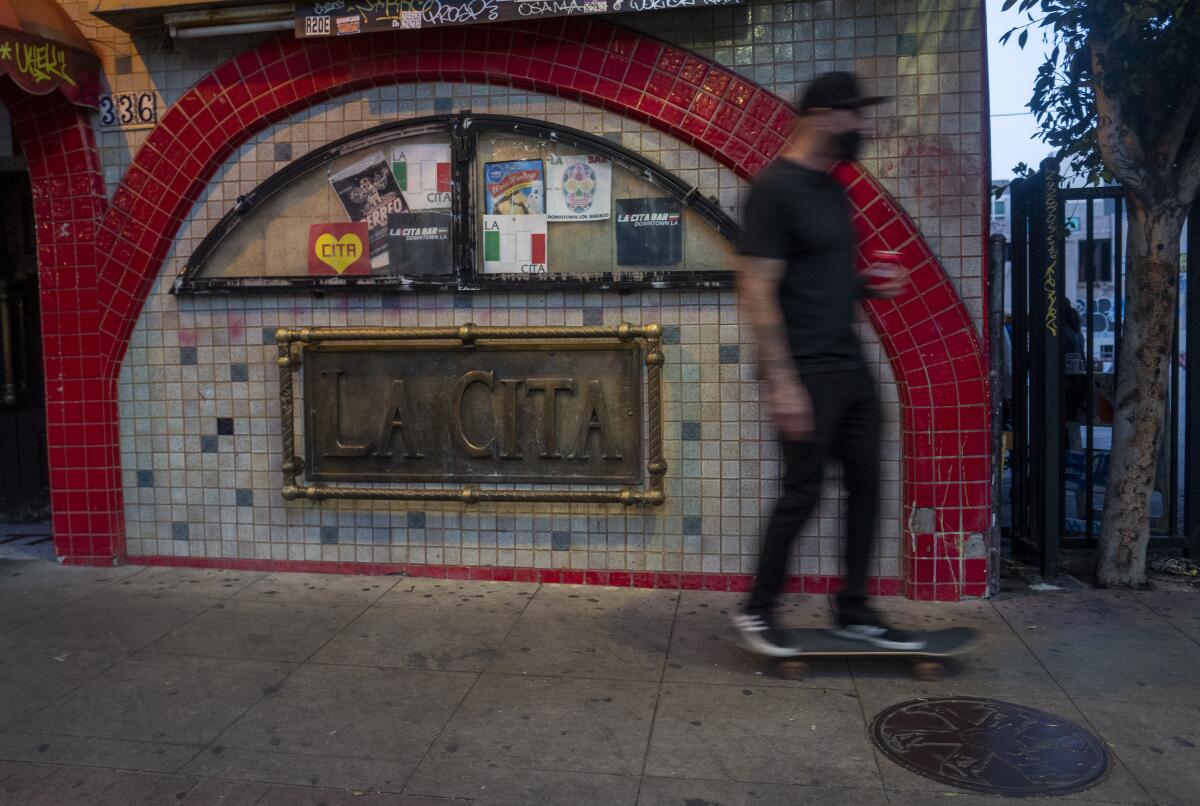
He misses Sundays at the bar: Inside, live cumbia, norteño and ranchero bands entertained what he calls “the after-church crowd,” while a build-your-own bloody Mary bar catered to younger generations on the patio. “When we started doing it we were wondering whether it would work or not, and it turned out it brought so many people together,” Lofgren said. “All of a sudden these hipsters are familiar with what ranchero music is about and sometimes they’ll get out there and dance with the little old ladies. It’s really a sense of coming together across cultures, which we really value, and I miss it the most.”
In Glendale and Highland Park, both locations of the Greyhound — a sports bar and chicken-wing destination — will return under the orange tier. Co-owner Matt Glassman says he and business partner Steven Williams are adding patio seating to the Glendale location.
Both locations serve a full food menu and would have been permitted to return under the state’s red-tier guidelines, but ownership decided that a return at only 25% of indoor capacity — and without any outdoor seating — wasn’t worth the health or financial risk. Now the Greyhound will return at 50% indoor capacity, with a new focus on pizza, in the next four to six weeks.
Not all bars are opening now.
Those without food service, a patio, ample sidewalk space, room to set tables apart indoors, or a permit to temporarily convert a parklet into a dining area must wait for the return of indoor bar service, which will arrive at 25% capacity in the yellow tier.
A look back at how the pandemic reshaped L.A.’s restaurant scene
Glassman and Williams also own ETA in Highland Park. Glassman said the intimate bar — known for its live jazz and $1 oysters — doesn’t have enough sidewalk space to justify the cost of restarting operations, and the small setting wouldn’t accommodate more than two or three tables indoors at eight feet apart. Glassman says they’ll need to wait until rules allow for nearer to 100% indoor capacity before ETA can return.
Hollywood piano bar Tramp Stamp Granny’s has been closed since March 12, 2020, and will remain closed through the orange tier out of a combination of circumstance and caution.
Without an outdoor space, co-owners Mia and Darren Criss and Danny Massare plan to keep the bar dark until they can seat guests at Tramp Stamp Granny’s glitter-topped tables once again. They say they aren’t racing to reopen: They prefer to wait for more updates from medical professionals and will wait for the yellow tier or later.
“I think what’s most important is supporting the community and making sure that everybody is kept safe, especially our customers and our staff members,” Mia Criss said. “Our first priority is their health and safety.”
Waiting also might allow for a return alongside indoor entertainment, a cornerstone of the bar which, prior to the pandemic, regularly hosted singalongs, LGBTQ cabarets and burlesque shows. All three co-owners are musicians and are planning the bar’s grand reopening not only in terms of cocktail lists but also programming.
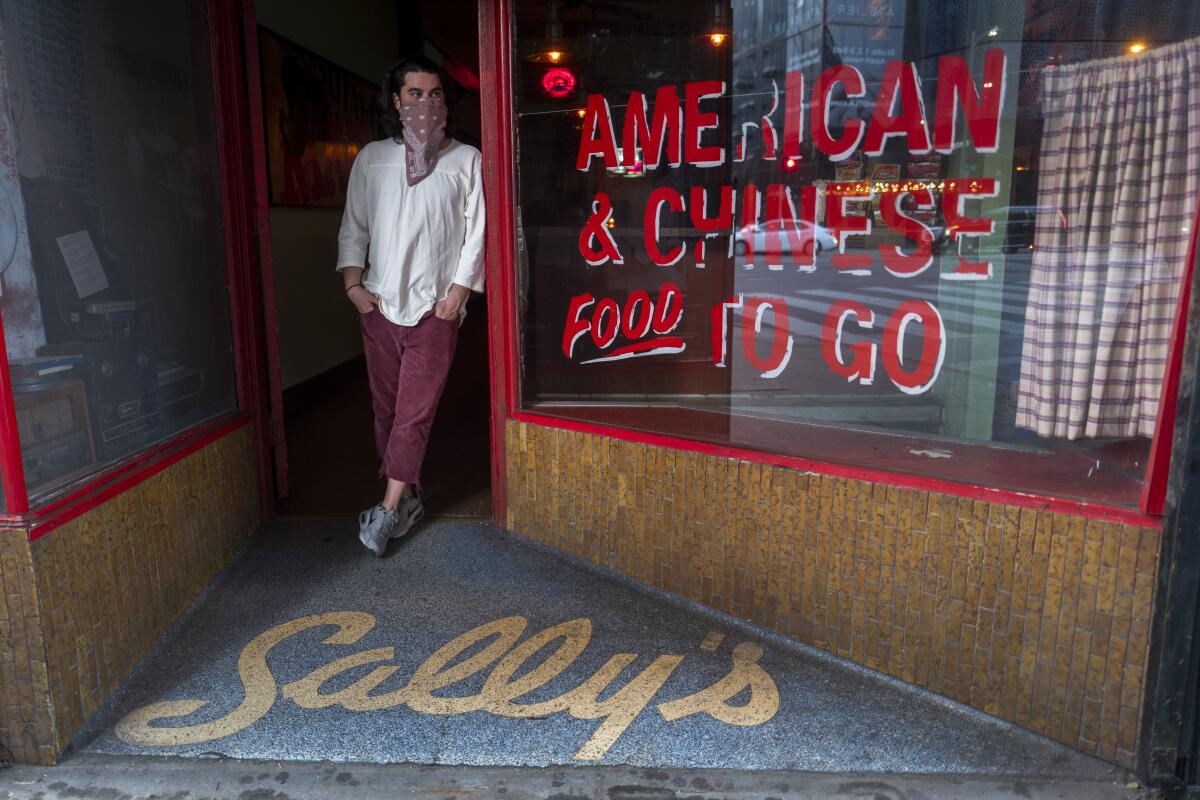
David Deluca isn’t waiting around. The owner of Ham and Eggs didn’t serve food at his downtown bar and music venue of nearly 10 years, and had to remain closed. But after learning his sidewalk is not sufficient for outdoor seating — which would have allowed him to reopen under the orange tier — he’s spent the last two weeks retrofitting the inside of the bar and will start offering instant ramen, which will be required for ordering drinks.
“I can’t go on much longer,” he said. “It’s been zero income and zero help from basically any agency, so it’s time to make some changes.”
As soon as he heard the news about the move to the orange tier, Deluca placed orders for wine, beer and linens and hired cleaning services to sanitize the space that’s sat vacant for a year. He replaced the live-music area with booths and partitioned seating, and replaced some of the non-opening front windows with opening windows and screens for new airflow into the bar.
Deluca estimates he’s spent 80 hours a week lately converting Ham and Eggs and that he’ll be ready to open shortly after the orange tier begins. At his other property, Chinatown’s LA Wine, he’s been serving California wine with cheese and other snacks on the patio but avoided opening indoors at only 25%. Under the orange tier, at 50% capacity, he’s considering it.
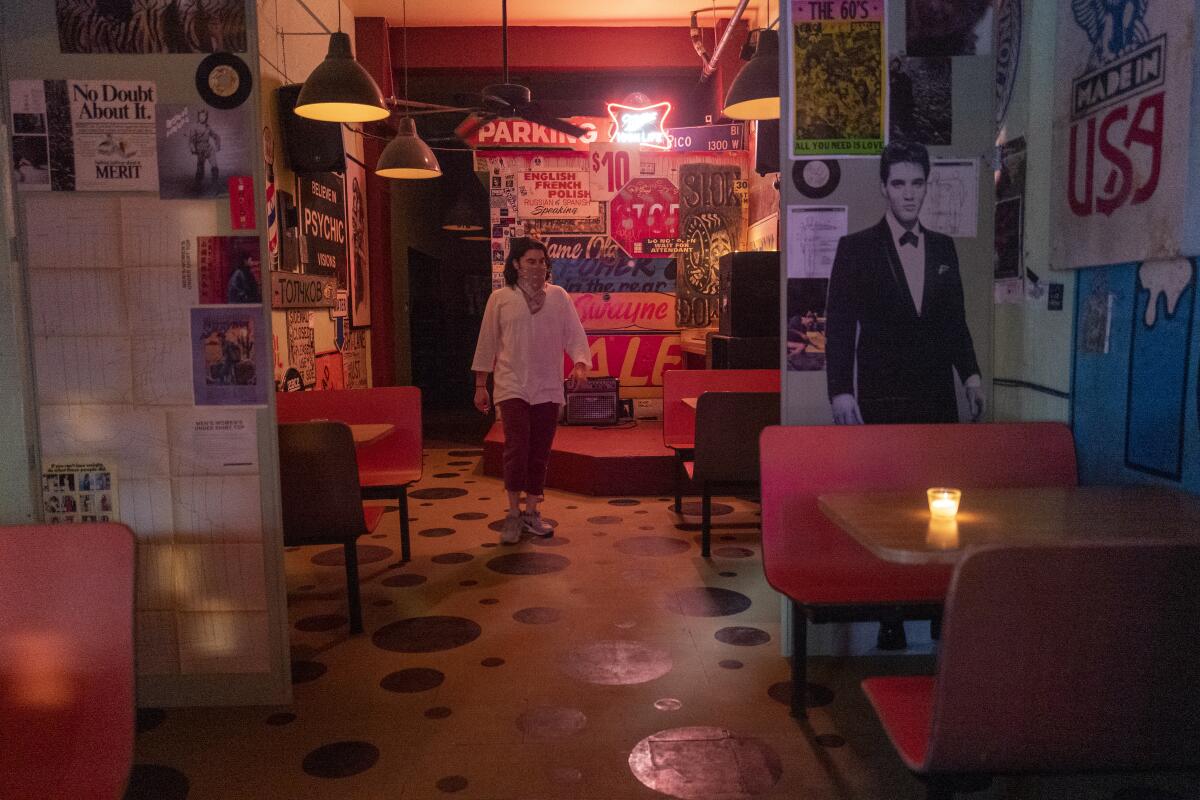
He estimates it will take years for his businesses — and the entire bar industry — to financially recover from the pandemic, and Deluca says he feels confused and slightly burned by the fact that bars weren’t allowed to reopen earlier along with restaurants, breweries, wineries and distilleries.
“Bars were kind of forgotten, but when people have a bad day, it’s the first place they go to vent and heal and chat and talk to their peers,” he said. “I think bar owners would love to have had the opportunity to open months ago with outdoor [seating], and then a couple weeks ago moving to 25% [indoor capacity]. But that wasn’t the case.”
More to Read
Eat your way across L.A.
Get our weekly Tasting Notes newsletter for reviews, news and more.
You may occasionally receive promotional content from the Los Angeles Times.

